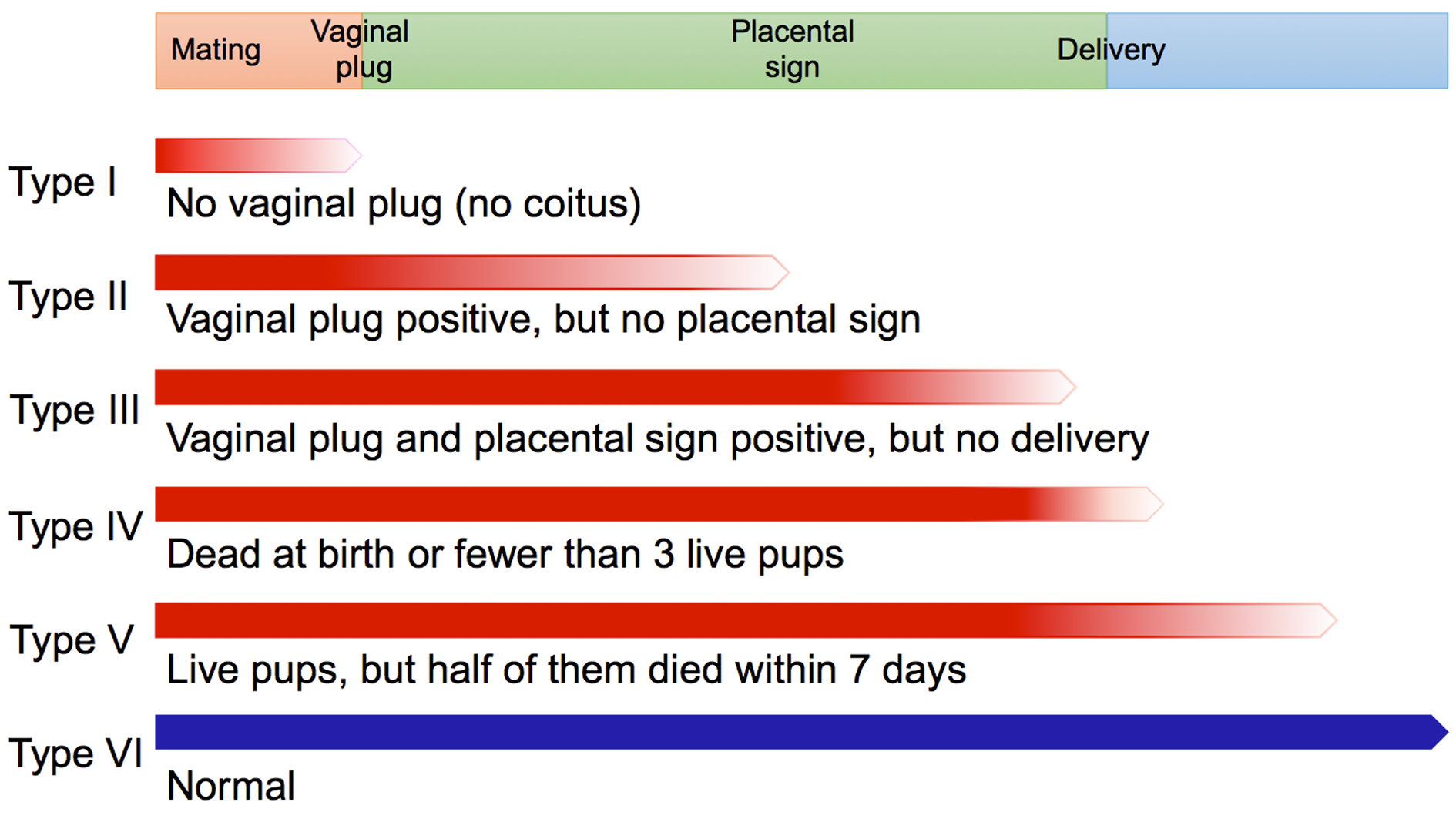|
Impaired female fertility in Tinagl1 deficient mice B6129S2-Tinagl1<tm1Maru> (RBRC09561)Courtesy of Hiromichi Matsumoto, Ph.D. Homologous matings of Tinagl1-/- females and Tinagl1-/- males showed impaired fertility during pregnancy, including failure to carry pregnancy to term and perinatal lethality. |
|
Blastocyst adhesion to the uterine epithelium stimulates the uterine stroma to form decidual tissue. Mass of decidual cells around embryo called deciduum is supported by extracellular matrix, which mediates crosstalk between deciduum and fetal cells and contributes to maintenance and protection of the fetus [1]. Tubulointerstitial nephritis antigen-like 1 (Tinagl1, also known as AZ-1 or lipocalin 7) is a secretory protein and is expressed in extraembryonic regions and uterine dediduum during postimplantation period [2-4]. Matsumoto and colleagues generated conditional Tinagl1 knockout mice to reveal the role of Tinagl1 during pregnancy. Although Tinagl1−/− embryos developed normally, homozygous female mice showed subfertility phenotype when mated with homozygous male [5]. Behavior of trophoblasts invading the uterus resembles to that of metastatic tumor cells, and recent studies indicate knockdown of Tinagl1 is associated with increased risk of cancer metastasis [6, 7]. Tinagl1 was also shown to be a proangiogenic matricellular protein in zebrafish [8]. Conditional Tinagl1 knockout strain will be a new tool to clarify the role of Tinagl1 in various tissues in mice. |
| Depositor | : | Hiromichi Matsumoto, Ph.D. Laboratory of Animal Breeding and Reproduction Utsunomiya University |
|
| Strain name | : | B6129S2-Tinagl1<tm1Maru> (Tinagl1 conditional KO mice) | |
| RBRC No. | : | RBRC09561 | |
| Related strains | |||
| Strain name | : | B6129S2-Tinagl1<tm1Maru> Tg(CAG/Acr-EGFP)Osb | |
| RBRC No. | : | RBRC09560 | |
| Strain name | : | B6129S2-Tinagl1<tm1.1Maru> (Tinagl1 KO mice) | |
| RBRC No. | : | RBRC09562 | |
| References | : | [1] | Behringer R, Gertsenstein M, Nagy K, Nagy A. Manipulating the Mouse Embryo: A Laboratory Manual, Fourth Edition. Cold Spring Harbor Laboratory Press, 2014. |
| [2] | Igarashi T, Tajiri Y, Sakurai M, Sato E, Li D, Mukai K, Suematsu M, Fukui E, Yoshizawa M, Matsumoto H. Tubulointerstitial nephritis antigen-like 1 is expressed in extraembryonic tissues and interacts with laminin 1 in the Reichert membrane at postimplantation in the mouse.Biol Reprod.; 81(5):948-55, 2009. | ||
| [3] | Tajiri Y, Igarashi T, Li D, Mukai K, Suematsu M, Fukui E, Yoshizawa M, Matsumoto H. Tubulointerstitial nephritis antigen-like 1 is expressed in the uterus and binds with integrins in decidualized endometrium during postimplantation in mice. Biol Reprod.; 82(2):263-70, 2010. | ||
| [4] | Sakurai M, Sato Y, Mukai K, Suematsu M, Fukui E, Yoshizawa M, Tanemura K, Hoshino Y, Matsumoto H, Sato E. Distribution of tubulointerstitial nephritis antigen-like 1 and structural matrix proteins in mouse embryos during preimplantation development in vivo and in vitro. Zygote; 22(2):259-65, 2014. | ||
| [5] | Takahashi A, Rahim A, Takeuchi M, Fukui E, Yoshizawa M, Mukai K, Suematsu M, Hasuwa H, Okabe M, Matsumoto H. Impaired female fertility in tubulointerstitial antigen-like 1-deficient mice. J Reprod Dev.; 62(1):43-9, 2016. | ||
| [6] | Korpal M, Ell BJ, Buffa FM, Ibrahim T, Blanco MA, Celià-Terrassa T, Mercatali L, Khan Z, Goodarzi H, Hua Y, Wei Y, Hu G, Garcia BA, Ragoussis J, Amadori D, Harris AL, Kang Y. Direct targeting of Sec23a by miR-200s influences cancer cell secretome and promotes metastatic colonization. Nat Med.; 17(9):1101-8, 2011. | ||
| [7] | Umeyama H, Iwadate M, Taguchi YH. TINAGL1 and B3GALNT1 are potential therapy target genes to suppress metastasis in non-small cell lung cancer. BMC Genomics; 15 Suppl 9:S2, 2014. | ||
| [8] | Brown LJ, Alawoki M, Crawford ME, Reida T, Sears A, Torma T, Albig AR. Lipocalin-7 is a matricellular regulator of angiogenesis. PLoS ONE; 5(11):e13905, 2010. | ||
| April 2016 Contact: Shinya Ayabe, Ph.D. Experimental Animal Division, RIKEN BioResource Center All materials contained on this site may not be reproduced, distributed, displayed, published or broadcast without the prior permission of the owner of that content. |






